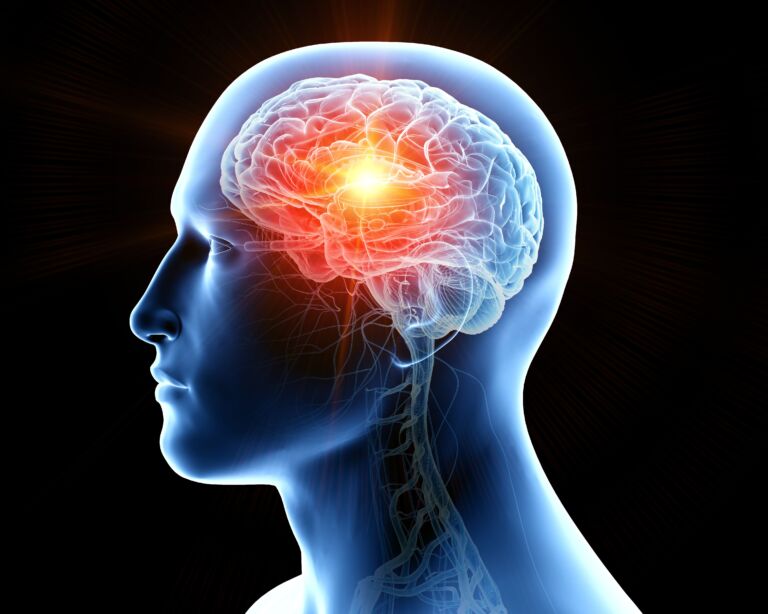However, a study by the University Hospital Zurich shows that survival rates for glioblastoma patients in the canton of Zurich have improved in recent years.
The reasons for this are advances in microneurosurgery, even more precise and less stressful radiotherapy, improved treatment with chemotherapeutic agents and new drugs, and treatment by multidisciplinary teams. Many medical disciplines work together in the treatment of brain tumors: Neuropathology, neuroradiology, nuclear medicine, neurosurgery, radio-oncology, neurology and internal oncology.
Overview: What is a glioblastoma
The brain consists of different types of cells and tumors are medically classified according to the cell type from which they develop. Gliomas develop from the supporting cells. They are divided into different groups and assigned a grade by the World Health Organization (WHO) depending on their malignancy:
- WHO grade I: It is a benign tumor that grows slowly and has a favorable prognosis.
- WHO grade II: The tumor is no longer benign and has a tendency to recur after treatment.
- WHO grade III: The tumor is malignant
- WHO grade IV: The tumor is very malignant, grows rapidly and has an unfavorable prognosis.
Further terms:
- Astrocytomas: They arise from glial cells and occur in all four WHO grades.
- Glioblastoma: A malignant astrocytoma, WHO grade IV
- Oligodendroglioma: It develops from certain glial cells, the oligodendrocytes, and occurs in different WHO grades.
- Ependymomas: They develop from the wall of the ventricles of the brain.
The few known risk factors for the development of glioblastoma include radiotherapy of the brain in childhood and very rare genetic syndromes. However, most patients do not have these risk factors.
Frequency and age
In Switzerland, three out of every 100,000 people are diagnosed with glioblastoma every year. Men are more frequently affected than women. The most common age of onset of glioblastoma is between the sixth and seventh decade of life.
Symptoms: Glioblastoma
Glioblastomas and many other benign and malignant brain tumors can cause many different symptoms. Sometimes they cause headaches, but these can also have completely different (harmless) causes. Many other symptoms may also occur, but these are also not specific to glioblastoma. They can also occur in many other neurological diseases. In particular, the symptoms depend on where in the brain the tumor is located and which centers are affected. Examples are:
- Nausea and vomiting
- Dizziness
- Seizures (epilepsy): Nerve cells “fire” and discharge uncontrollably. Especially in adults, a first seizure is an alarm signal.
- Impaired consciousness – from drowsiness to coma
- cognitive disorders, for example forgetfulness, impaired thinking, concentration and attention
- neurological disorders, for example paralysis, numbness, sensory disorders (e.g. heat, cold, touch, pressure), speech, vision, swallowing, movement and coordination disorders, gait instability, hearing loss
- Changes in character and personality, for example irritability, aggressiveness, listlessness, apathy, disorientation, anxiety, depression
If the tumor grows and spreads quickly, those affected will feel the first symptoms early on. Seek medical advice if you experience such symptoms.
Glioblastoma – Diagnosis by us
When taking your medical history, it is important that you tell us all the medication you are currently taking. We will ask you about your medical history and ask you to describe the symptoms, their duration and frequency. The diagnosis of glioblastoma involves the following procedure:
A neurological examination by a specialist is the first step in any assessment. This is usually followed by an imaging procedure that provides further clarity. If there really is a brain tumor, then further diagnostics are required to precisely localize it and determine its size and extent. With the help of magnetic resonance imaging (MRI), this is comprehensively possible. Another imaging examination method is positron emission tomography (PET). These examinations are somewhat time-consuming but not painful and are carried out on an outpatient basis.
In order to make a definitive diagnosis, a tissue sample usually needs to be taken. The tumor tissue is obtained during an operation. The surgical procedure also aims to remove as much of the tumor as possible. Sometimes, however, the tumor is in an unfavorable location and surgery is not possible because of the high risk of neurological disorders. In this case, a biopsy is carried out as part of a minor procedure to clarify the diagnosis.
Glioblastoma: prevention, early detection, prognosis
There are no ways to prevent glioblastoma or to detect it as part of a screening examination. The prognosis for this most malignant brain tumor is unfortunately not favorable, but research and medicine have made some progress in recent years and new findings and therapeutic approaches are regularly made.
At the Brain Tumor Center, we will also advise you on whether treatment is possible as part of a clinical trial in order to give you access to new and promising treatment options. We are also happy to provide a second opinion.
Most advanced treatment at the USZ
We will provide you with comprehensive advice if you suspect a glioblastoma or if the diagnosis has already been confirmed. Experts from all disciplines are available to help you with the diagnosis and treatment of your illness. As part of our Brain Tumor Center, we offer a one-stop treatment that aims to meet your personal needs and provide you with the best and most advanced treatment. At the USZ, we have the most modern equipment and therapy procedures at our disposal, enabling us to provide you with an individualized treatment plan. You are also welcome to contact us for a second opinion.
Glioblastoma: treatments and therapy
Glioblastoma therapy includes surgery, radiotherapy and systemic therapy (treatment with various drugs). Sometimes an embolization is performed before the operation to close the blood vessels leading to the tumour. This restricts the supply of oxygen and nutrients to the tumor.
There is also the possibility of accompanying complementary medical treatment.
